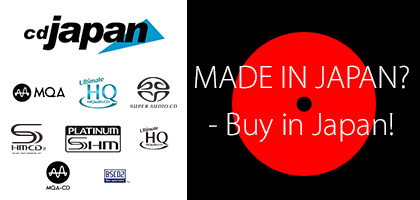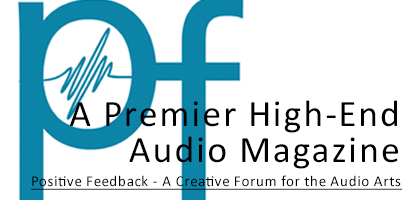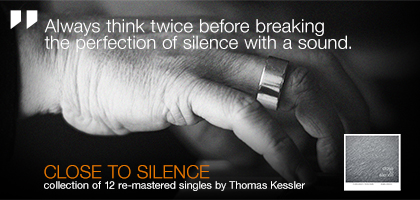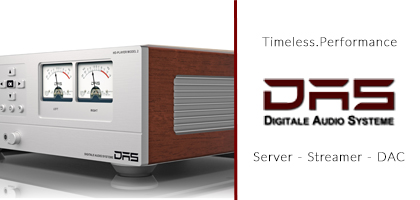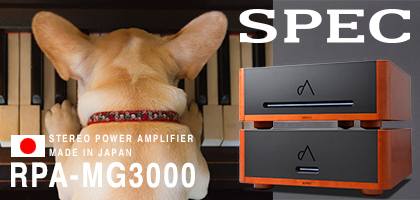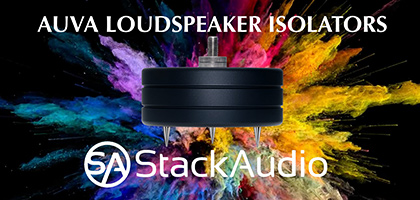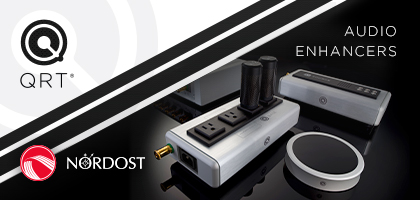 Contents
Contents
No. 239 April 2024
- COVER REVIEW: Muarah MT-3 & MY-1/9 ⸜ turntable & tonearm » POLAND
- KRAKOW SONIC SOCIETY ⸜ meeting № 145: POLSKIE NAGRANIA (Polish Recordings label) on SACD, with Damian Lipiński onboard » POLAND/Kraków
- REVIEW: Carbide Audio CARBIDE BASE ⸜ anti-vibration feet » USA
- REVIEW: Fezz Audio EQUINOX EVO ⸜ digital-to-analog converter » POLAND
- REVIEW: Marton OPUSCULUM OMNI V1.0 ⸜ integrated amplifier » POLAND
- REVIEW: Norma Audio Electronics REVO IPA-80 ⸜ integrated amplifier » ITALY

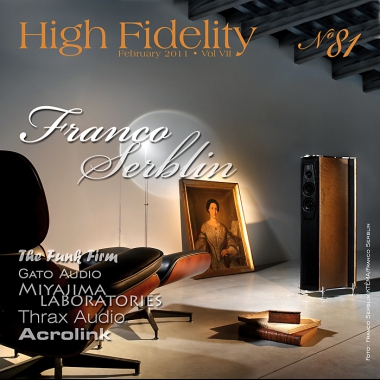
|
Who wants a cable?

Testing audio products, from any price level, especially for long, after some time one forgets how it was in the beginning. And in the beginning there was… chaos. I do not remember much from my first steps. I will of course remember, that is quite obvious, special milestones and “threshold” events, when in a sudden epiphany I experienced something completely new, when I got a completely new perspective, simply when I heard a sound, that moved me in such a way, that it became a new step. Because I think, that experience in listening, sensibility to sound and – probably the most important thing – the ability to verbalize that (that, what is little available except for the language), interpret and evaluate it comes in time, and resembles a long climb on a staircase leading up a pyramid. This because this type of sensibility comes not only from the genes, but also from a continuous learning curve, ongoing training of those abilities. And I think, that this second element is most important. 
With all that, I assume that there is something like “absolute sound”, an ideal, to which we all strive. Like I wrote earlier, this is only an ideal, a common idea, which is implemented differently, depending on whom we ask, and what we expect from the audio gear. So when we assume, that the audio world as a whole resembles the pyramid I mentioned earlier, then we can see, that the goal can be reached in many different ways, sometimes even opposite ones, as long as they are on its surface (I mean – we climb along one of the sides). This is something I sometimes say during the tests – for example, when showing what class of equipment we deal with, and when I remind another product of the same class, as the tested one, but having a different character. Because we can reach the goal in different ways, under the condition that we know, where we are going and we do not dwell. 
On the other hand, a splendid example, that even very small ensembles, when played in the right acoustics, especially playing classical music, also need large space. It turned out, that I had a very good seat during the Krakow concert of La Poème Harmonique, sitting maybe four or five meters away from the soprano singer Claire Lefilliâtre. It could seem, that this is a similar setting to what we can deal with in a large room, sitting in front of our speakers, right? Well, not right – together with the voice the acoustics of the big St. Catherina’s Church sung. In addition the musicians were placed on quite a big space. I hope you understand what I am trying to say. The top of the pyramid, we are talking about, does not exist. At home we cannot reproduce a live event, and we should better prepare for that right from the start. So what is the reference point for a music lover and an audio reviewer? There are two sources, in which the home audio equipment is reflected. One is… a live event. Yes, in the end the sound of the voice is basic, as well as the sound of acoustic instruments. But in fact this is about a GROUP, a certain CLASS of voices, instruments, etc, and not individual voices or instruments. This live sound is a reference point, but not a hard one – as I wrote earlier. This point of view must be correlated with how the discs sound in the best systems we know. Only the combination of our “aural” and “sonic” memory from concerts and listening sessions results in that, what we can expect from a tested, or just listened to, audio system. Because we have to know the real sound – but I’ll repeat: it is here about a certain class, and not about the individual sound – but in relationship to the capabilities of the audio system. I see, that I wrote quite a lot. And this was only the introduction to a story, that took place a few weeks ago. Together with a good acquaintance I unrolled the cables to prepare the soundstage for a concert of a small group playing spirituals music. This acquaintance I am talking about, does not have anything in common with audio or acoustics, he was just there to help me move the things around the stage. And at one moment he said, that I am probably the best person to be asked – his friend bought an audio system for 15 000 zl. And in addition the seller prepared a set of cables for another 15 000 zl. The system sounds very well, I was informed, and this friend is very satisfied, but he grumbles about having to spend the same money on cables to have it sound well – it was OK earlier, but it was not even a fraction of what it is now. And the conversation finished with a question: “Wojtek, did they cheat him?” There can be a few possible answers, and all will have some sense. But no one will respond to the basic question, which is behind the story: do you have to pay such money for cables? Because the first response to my acquaintance’s question is – no, nobody cheated that music lover. Somebody just composed a system just like it should have been composed. In other words – cables are, in my opinion, an equal part of an audio system. Anyone, who listened to a good system, in good conditions, and changed cabling knows how things are. And when somebody does not hear the change even in favorable conditions, then – and this is again only my opinion, but supported by many years of experience and physics – he is deaf. But also happy – he can buy a small radio and will be happy with that. And I am not ironic, because one of the best buys I did during the last years, was the purchase of the Tivoli Audio Model One. But like I say – if you do not “believe” in cables, please try them out in a good system, or ask a good audio salon to make such a session for some people. Such education could be beneficial for customers and shops alike. But still the price thorn remains. Because there is another side to this – cables are too expensive. Their price has no relation whatsoever to the materials, work spent and material research – the three things, that combine into the price of a complete product. I think, that all cables should cost less than 50% of their current prices, and if it would be 25%, then it would be even better. But the problem is, that when a cable is good, when the sound of the system connected with it is much better, then it will be expensive. We can talk about a corporative heist of our money, when we think of all the cable manufacturers as a corporation. But this is how it is, and we should get used to that. Because no one stands out and starts selling cables as good, but for half the price. I do not know any such case, except for manufacturers, who sell their merchandise without shops and distributors – they save on the margins of the middlemen (an example can be the company Vipera, I tested their cables last month). But because they do not have a sales network, they will remain a certain margin. And when they are as known as cables distributed the classic way, then this is the result of intensive promotional campaigns, because when not in the shops, they have to show themselves in audio magazines, what increases the prices, because they need to pay for the advertizing. 
|
Because a good cable costs. It should not cost that much, but the world is not fair, and many things should be different to what they are. We can rebel and buy something cheap, especially from the “pro” world and it will be fine. But we will never reach the same level as with cabling from a good specialist. At least in my opinion. This is why I understand the man I am writing about, because spending the same amount of money on cables as on the system does hurt. But please not the information, that is equally important in his story: the system with good cables sounded exactly as he wanted. And it was not the case without them. Is this not what things are about? For me it is – a satisfactory quality of sound. No. 82, February 2011 No. 83, March 2011 Planned tests: We will get this set directly from China, the company has direct sales. This is an example, how cheaply buy a nice audio system  HM-602 is the newest portable player from HiFiMan with a slot for SD cards. It is built around high class converters and handles FLAC files up to 24 bits 96 kHz.  A very nice system, based on a computer as the sound source. This is a ready set. Just attach to a computer and we get a sound, which will be better, than from some “fully fledged” audio systems. This is the best version of the DAC. We tested some time ago the player DSS 30 Tube (HERE). This is the newest Luxman product, and we hope it will be there in time – it is not even listed yet on Luxman web page. This is a DAC with USB input, preamplifier and headphone amplifier in one. I mentioned them earlier – those are incredible USB cables from the Japanese company Acoustic Revive, where the power is supplied with a different cable than the signal. 
The new, top version, based on the popular model. I do not know what model it would be, most probably the Pro. A brilliant, cheap device, I am using since half a year. We tried to chose products not so obvious, as usual liking at their prices. Players from Linn and Naim we can test anytime. Wojciech Pacuła |
About Us |
We cooperate |
Patrons |
|
Our reviewers regularly contribute to “Enjoy the Music.com”, “Positive-Feedback.com”, “HiFiStatement.net” and “Hi-Fi Choice & Home Cinema. Edycja Polska” . "High Fidelity" is a monthly magazine dedicated to high quality sound. It has been published since May 1st, 2004. Up until October 2008, the magazine was called "High Fidelity OnLine", but since November 2008 it has been registered under the new title. "High Fidelity" is an online magazine, i.e. it is only published on the web. For the last few years it has been published both in Polish and in English. Thanks to our English section, the magazine has now a worldwide reach - statistics show that we have readers from almost every country in the world. Once a year, we prepare a printed edition of one of reviews published online. This unique, limited collector's edition is given to the visitors of the Audio Show in Warsaw, Poland, held in November of each year. For years, "High Fidelity" has been cooperating with other audio magazines, including “Enjoy the Music.com” and “Positive-Feedback.com” in the U.S. and “HiFiStatement.net” in Germany. Our reviews have also been published by “6moons.com”. You can contact any of our contributors by clicking his email address on our CONTACT page. |




 |
     |
main page | archive | contact | kts
© 2009 HighFidelity, design by PikselStudio,
projektowanie stron www: Indecity



